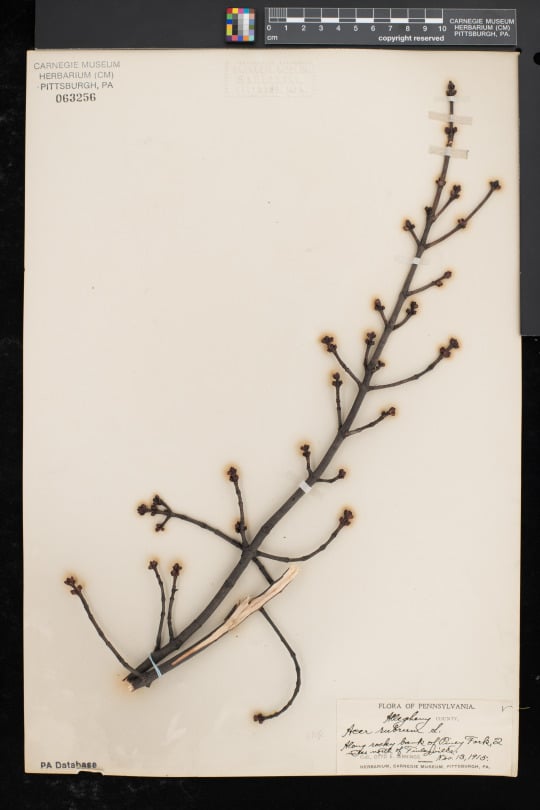So long, leaves.
Autumn has fallen.

This specimen of red maple (Acer rubrum) was collected on November 13, 1915 by Otto Jennings near Finleyville, Pennsylvania (about 30 miles south of Pittsburgh). Jennings was an influential botany curator (and biology professor at University of Pittsburgh and director of Carnegie Museum, among many other roles through his many decades career at the museum).
Just imagine how beautifully red these leaves must have been. And you’ll have to imagine because this specimen is just twigs!
But upon closer look, the twigs have a lot to admire. As with other deciduous trees in Pennsylvania, the buds are primed and ready. In spring (as early as March for red maple!), these buds will swell and flowers will emerge. Leaves will follow.
But first, we wait it out through winter.
Pay attention to tree buds this winter. They have a lot to say.
Find this red maple specimen here (along with 512 others!).
Check back for more! Botanists at the Carnegie Museum of Natural History share digital specimens from the herbarium on dates they were collected. They are in the midst of a three-year project to digitize nearly 190,000 plant specimens collected in the region, making images and other data publicly available online. This effort is part of the Mid-Atlantic Megalopolis Project (mamdigitization.org), a network of thirteen herbaria spanning the densely populated urban corridor from Washington, D.C. to New York City to achieve a greater understanding of our urban areas, including the unique industrial and environmental history of the greater Pittsburgh region. This project is made possible by the National Science Foundation under grant no. 1801022.
Mason Heberling is Assistant Curator of Botany at Carnegie Museum of Natural History. Museum employees are encouraged to blog about their unique experiences and knowledge gained from working at the museum.
Related Content
Collected On This Day 98 Years Ago (Chestnuts)
